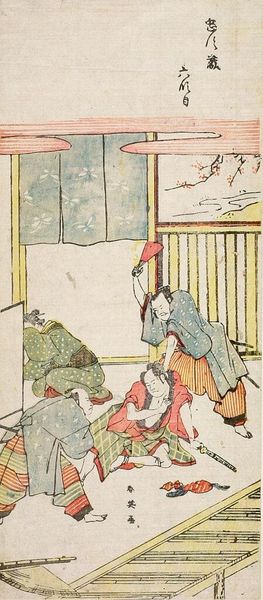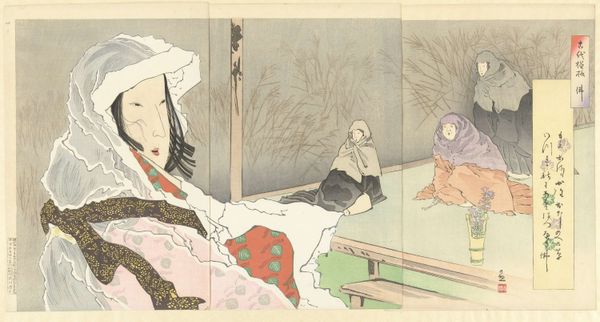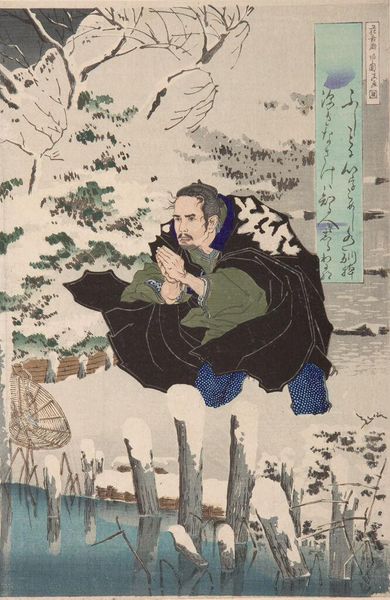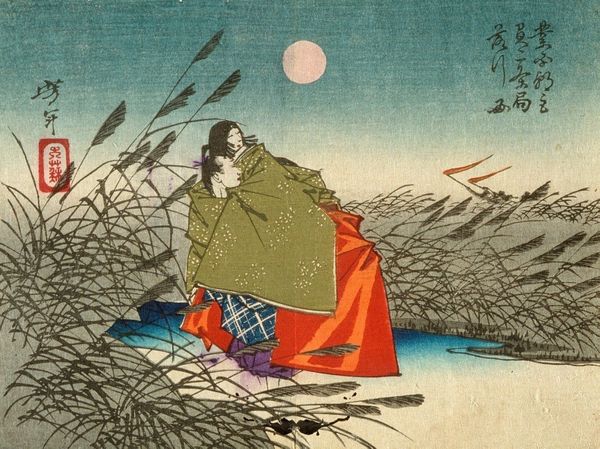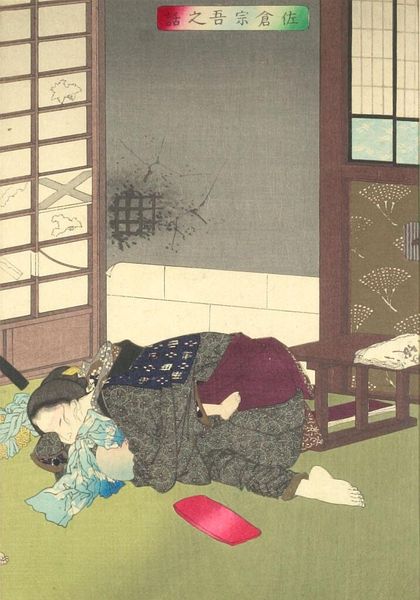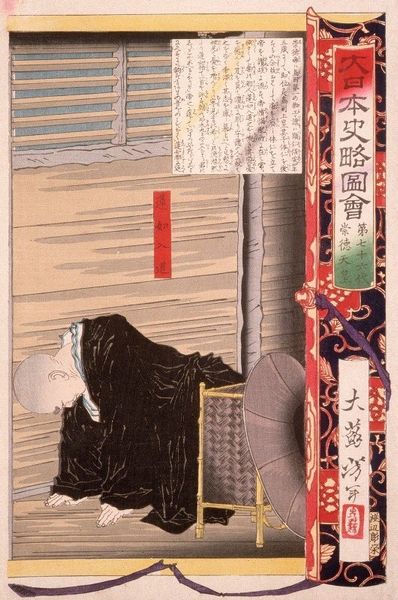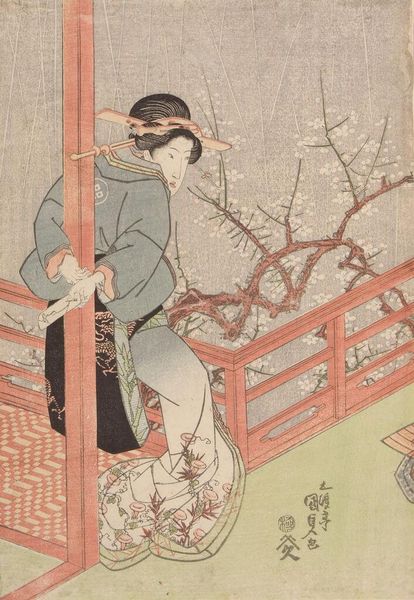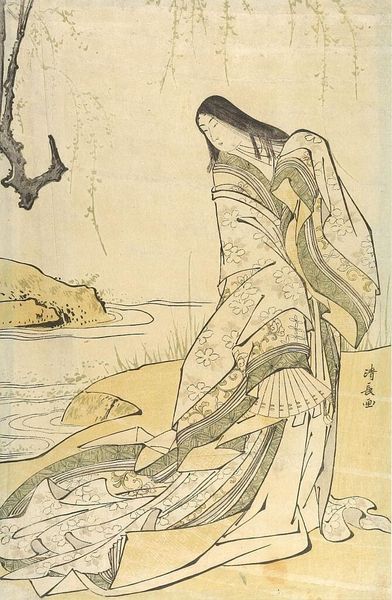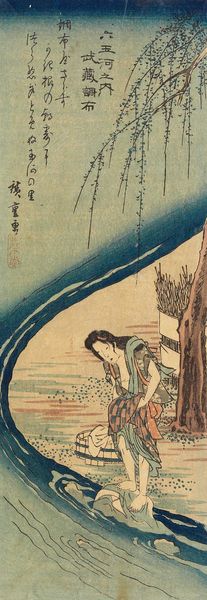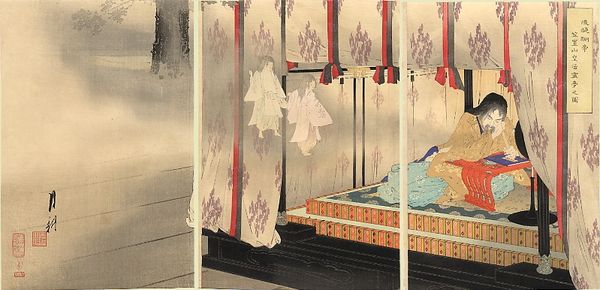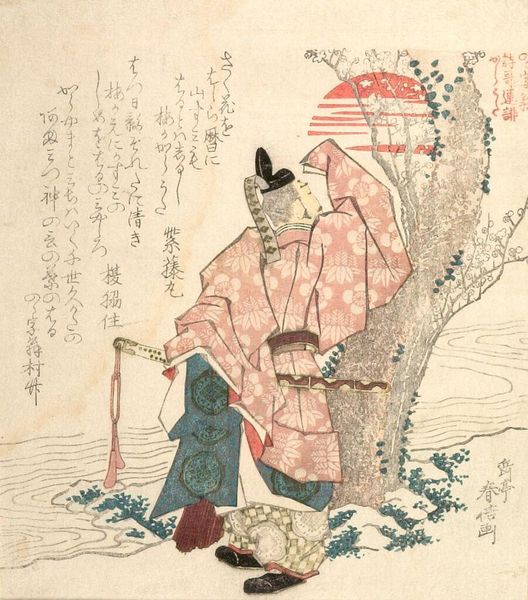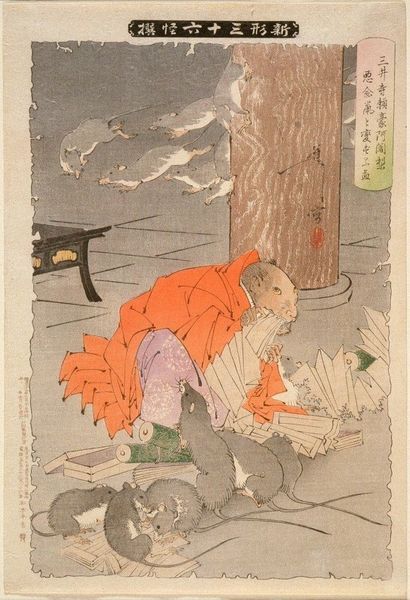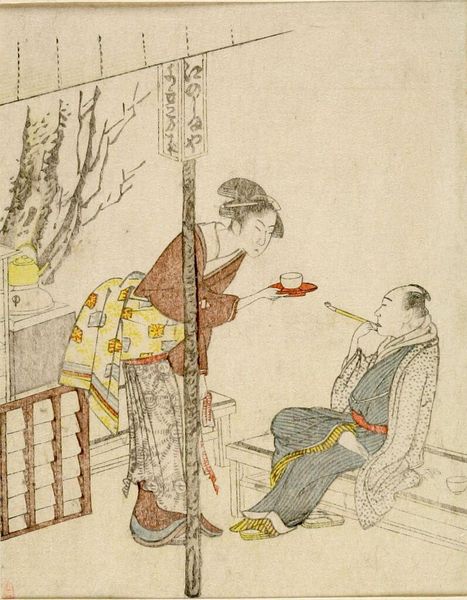
Copyright: Public Domain: Artvee
Kobayashi Kiyochika made this woodblock print, titled "The Dancer Hotoke Gozen at Giōji," during Japan's Meiji period, a time of rapid modernization and Westernization. Kiyochika, however, remained interested in traditional Japanese subjects. Here, he depicts a scene inspired by "The Tale of the Heike," a medieval epic about the rise and fall of the Taira clan. The print shows Hotoke Gozen, a celebrated dancer who retired to a Buddhist convent after losing the favor of a powerful warlord. The scene is quiet, even melancholic. It reflects the Buddhist themes of impermanence and the vanity of worldly fame. But Kiyochika’s work also comments on the social structures of his time. As Japan modernized, many traditional art forms faced decline. Kiyochika’s commitment to ukiyo-e prints, a genre associated with the past, can be seen as a subtle critique of the cultural changes sweeping the nation. To understand this print better, we might explore the history of ukiyo-e, the social status of dancers and courtesans in Japanese society, and the role of Buddhism in shaping cultural values. All this can give us invaluable insights into the complex interplay between art, society, and history.
Comments
No comments
Be the first to comment and join the conversation on the ultimate creative platform.
